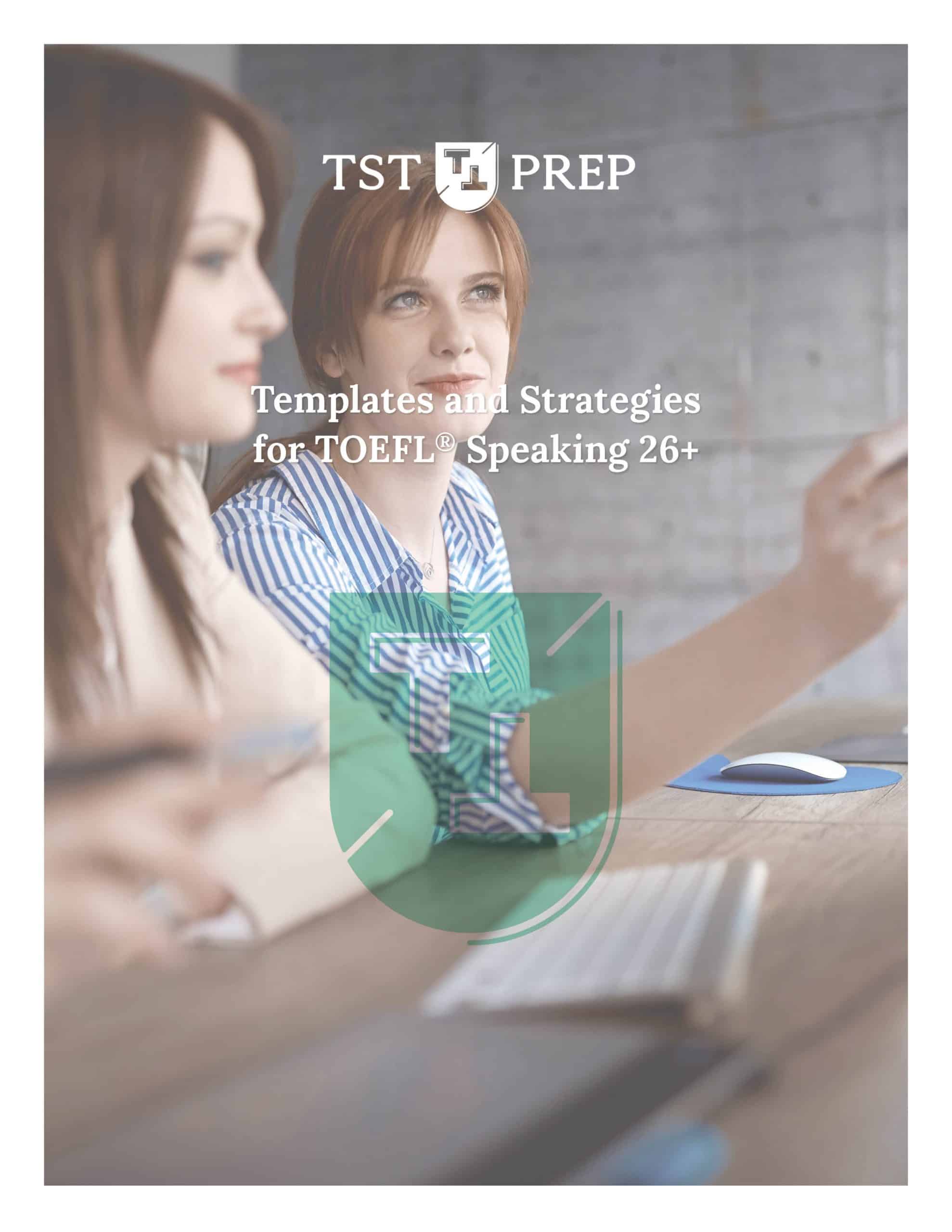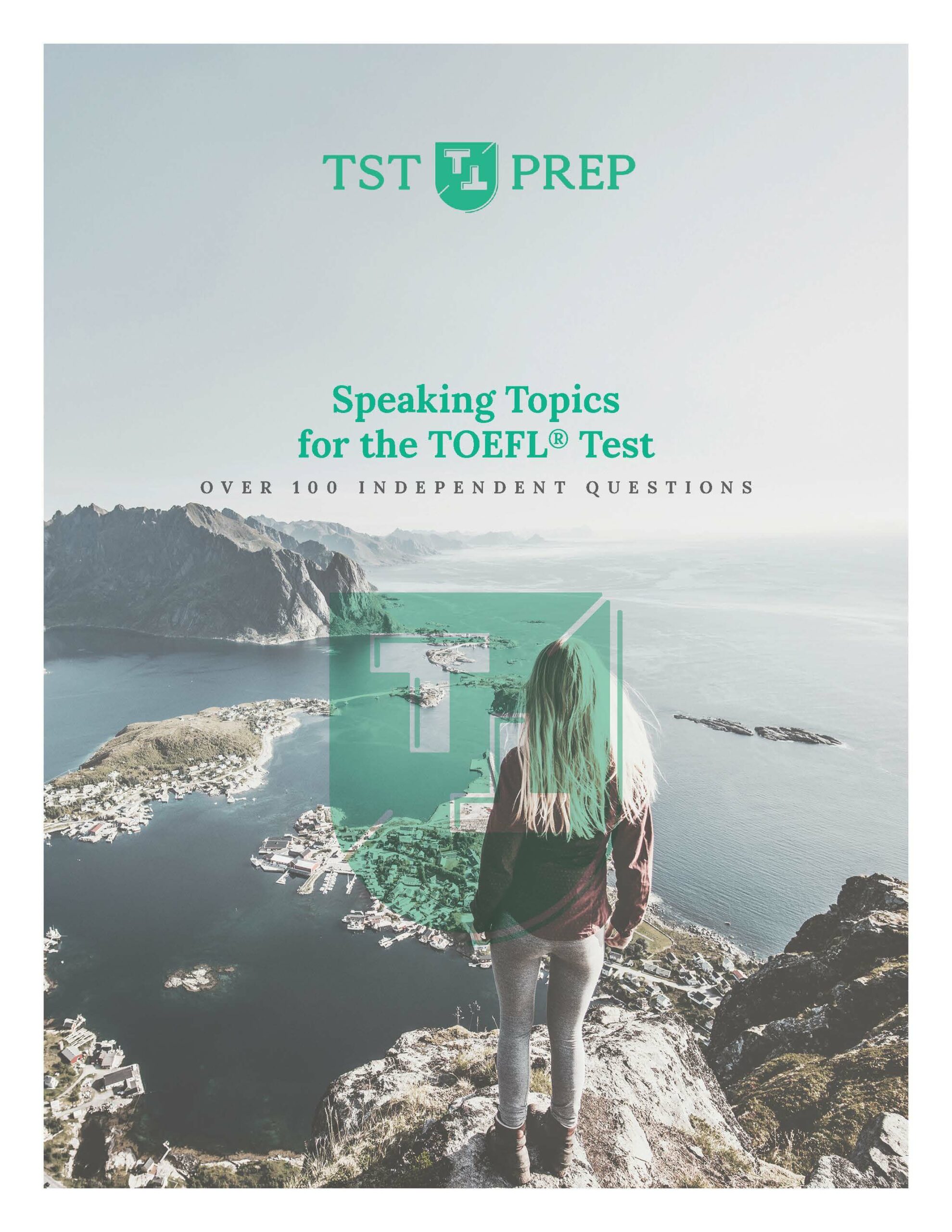You are doing great so far!
You have already read about TOEFL Speaking questions one and two.
Time to talk about TOEFL Speaking question three.
TOEFL Speaking question three consists of both a reading passage and a recorded lecture about the same topic. You will take notes on both and then give a paraphrased summary drawing on information from both sources. You will have 30 seconds to prepare and 60 seconds to speak.
You might be thinking, how can I prepare and deliver a response in just 60 seconds?
Here’s how:
- Take notes like a pro – Write down short notes on the reading passage and just enough notes on the lecture to help you when it is time to speak.
- Be casual – Imagine you are a teacher, trying to explain this to a child.
- Plan in advance what you are going to say – Review your notes before you speak so you know exactly what to say.
- Make your life easier: follow a template – Create your own template and practice until you can do it in your sleep.
In this article, we will take you through each step so that you will feel comfortable and confident no matter what topic you get for TOEFL Speaking question three.
Let’s take a quick look at the structure of TOEFL Speaking question three.
1st – You have 45 seconds to read a short paragraph (about 100 words)
2nd – The reading disappears and you will listen to a lecture about the same topic. The lecture will be between 60-90 seconds.
3rd – The question will appear. You have 30 seconds to prepare your response.
4th – Time to speak. You will have 60 seconds to speak.
Here’s an example from TST Prep’s Test #13:
Speaking Task 3
You will now read a short passage and then listen to a lecture on the same topic. You will then be asked a question about the passages. After you hear the question, you will have 30 seconds to prepare your response and 60 seconds to speak.
You have 45 seconds to read the passage below. You may begin reading now.
Compassionate Consumerism
Compassionate consumerism is a relatively new trend in the American retail market. In this type of consumerism, when individuals make a purchase a portion of the money they pay is allocated to a charitable cause. Nowadays, individuals often look for ways to contribute to the betterment of humanity, but they don’t always have the financial resources to do so. Compassionate consumerism appears to be a good middle ground. While critics feel that it’s only a marketing ploy aimed at appealing to people in their 20s and 30s, others applaud the effort. They argue that it is desirable for companies to sacrifice profits in order to help those in need.
Now listen to a lecture about this topic in a business class.
Now answer the question.
Using the examples from the lecture, explain what compassionate consumerism is and how it works.
Preparation Time: 30 seconds
Response Time: 60 seconds
Tip #1: Take notes like a pro
First, you will be given a reading topic of about 80 to 120 words. Your goal is to skim and write down several key pieces of information.
T stands for topic. This is usually the title.
D stands for definition. This is usually stated in the first or second sentence.
AN stands for additional notes. 45 seconds is not a lot of time, but if you can, write down any additional information you think is important.
Let’s look at an example:
Mimicry
According to evolutionary biology, there are various features that living organisms have developed in order to adapt to their environment and to survive in it. While most people are familiar with characteristics like camouflage, mimicry is another common defense mechanism. Mimicry is when one species copies or mimics the look of another animal that is better adapted to the environment. Living things that use mimicry might copy the size, shape, color, smell, or behavior of another to either attract a mate, find food, or avoid predators. In some cases, they may even adopt several of these traits simultaneously.
| Reading | Listening | |
| T | mimicry | EX1: harmless animal look like a more dangerous one |
| D | one species looks like another that is better adapted | SD1: King snake try to look like red poison snake |
| AN | copy size, shape, smell, color | EX2: Animals copy behaviors of other animals |
| AN | attract a mate, find food, avoid predators | SD2: Drongo bird copies sound of dangerous bird to steal food |
Pro tip: Although the above example contains some full words and phrases, simply writing one or two words to help you remember is also fine.
Tip #2: How to sound casual
The TOEFL Speaking exam is testing if you feel comfortable and confident while speaking English, so you should sound as natural as possible.
One approach that is quite popular is to imagine you are a parent explaining this topic to your children.
Listen to this example and notice the casual tone.
Speaking Task 3: Sample Answer
The reading passage goes into detail about mimicry, which is when one animal will try to copy some aspect of another animal in order to survive. At first, the lecturer talks about the king snake. Now, this snake isn’t poisonous, but it knows how to change its skin to red so it looks like a coral snake, which is poisonous. The professor also mentions the drongo bird, which has learned to mimic the sound of other birds. So, after these other birds have killed some prey, the drongo bird will start copying their alarm sound; signaling that there are predators nearby. The birds soon fly away, and the drongo bird enjoys a free meal. As you can see, both the king snake and drongo bird use mimicry to help them survive and thrive.
See how natural and casual he sounds? This is how you want to deliver your answers on test day.
Tip #3: Plan your response
If you have taken good notes, then planning what to say will be straight forward.
Let’s take a look again at the sample answer to the question on Mimicry
Notice how this follows the order of your notes?
| Reading | Listening | |
| T | mimicry | EX1: harmless animal look like a more dangerous one |
| D | one species looks like another that is better adapted | SD1: King snake try to look like red poison snake |
| AN | copy size, shape, smell, color | EX2: Animals copy behaviors of other animals |
| AN | attract a mate, find food, avoid predators | SD2: Drongo bird copies sound of dangerous bird to steal food |
Pro Tip: This particular response decided not to use the supporting details from the reading, but if you are a fast speaker, it would be advisable to do so.
Tip #4: Follow a template
There are a few key phrases you should memorize and use for every practice question, so by the time you get to the real question three, you won’t be confused as to how to start. Below are common phrases that work almost every time:
- The introduction phrase: “Both the reading and the lecture discuss…….X”
- The definition phrase: “X essentially means that………….”
- Transitioning from the reading to the lecturer: “The professor clearly illustrates this by providing the example(s) of…….”
- Common transition phrases for developing points, such as: “also, in addition, moreover, as a result, consequently,” and many more. Pick a few of your favorites and practice using them in every question you answer.
- Conclusion phrase: “this is how the professor explains X.”
Basic Template: Question 3 |
||
|---|---|---|
| Template | Content | Time |
| According to the reading (topic) is (topic definition) |
|
0-10 Seconds |
| In the lecture, the professor delves deeper into this subject by providing on example of/two examples of (topic). To start the lecturer explains that (first example of topic) |
|
11-32 Seconds |
| He/She goes on to say (second example of topic) |
|
33 - 54 seconds |
| So, after listening I now have a better understanding of what (topic) is. |
|
55 - 60 seconds |
This will make you more confident when it comes time to start speaking because you already know the first few words you are going to say!
Conclusion
- Take notes like a pro – Write down short notes on the reading passage and just enough notes on the lecture to help you when it is time to speak.
- Be casual – Imagine you are a teacher, trying to explain this to a child.
- Plan in advance what you are going to say – Review your notes before you speak so you know exactly what to say.
- Make your life easier: follow a template – Create your own template and practice until you can do it in your sleep.










18 Comments
Comments navigation
Aakash Ghimire
Hi Josh, I appreciate the effort you have been putting in to help students with the TOEFL exam. I can’t even imagine how much I would struggle if I didn’t have any content like this. I am still hopeful to get some more favor from you. If you don’t find it problematic, can you please help me out by telling me where I can find more questions and topics regarding the speaking section in the current format? I will attend the test within a week, and I am still not very confident with the speaking section. I would be happy to see your response as soon as possible.
Josh
Thanks very much for your kind words. We offer a wide variety of free and current questions for the speaking section. https://tstprep.com/practice-questions-toefl-speaking/
Additionally, if you are taking speaking lessons with us, you can gain to additional 13 speaking tests. Hope this helps!
Uldouz
Hi Josh! Thanks for all the useful tips. I have a question: where can I find the sample answer to the question on Compassionate Consumerism?
Josh
Hi there and thank you for this question. Follow this link – https://app.zengengo.com/assignments/audio/submit-audio.php?id=ZWMJOW . Submit a sample answer and after you submit it will take you to a page with the example answer and audio file. I hope that helps.
Comments navigation